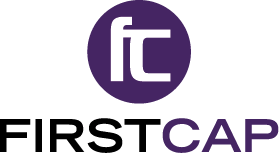The Importance of Credit Vetting and Monitoring for Business Success
Are You Confident in Your Customer’s Ability to Pay on Time?
Extending credit to customers involves risk. Without proper vetting and monitoring of their financial health, businesses face challenges such as late payments, bad debts, and cash flow disruptions. Implementing effective credit risk management helps mitigate these issues, ensuring smoother operations and financial stability.
Credit vetting and monitoring are not just about avoiding losses; they also pave the way for better customer relationships and business growth. Businesses that focus on these strategies can make informed decisions, safeguard cash flows, and maintain a strong financial foundation.
Why Credit Vetting Matters for Your Business
Credit vetting involves assessing a customer’s financial history to understand their ability to meet payment terms. This step is particularly valuable for small and medium-sized enterprises (SMEs), where a single instance of bad debt can have significant repercussions.
Key Benefits of Credit Vetting
- Protecting Cash Flow: Identifying high-risk customers early reduces potential risks to your cash flow.
- Reducing Exposure to Fraud: Analysing financial activities and ownership details helps businesses detect questionable dealings.
- Establishing Confidence: Understanding credit ratings ensures you build partnerships with reliable clients.
Tools for Credit Vetting
Platforms like Experian, CreditSafe, and other credit reference agencies provide detailed business credit reports. These tools offer insights into:
- Credit scores and payment history.
- Financial statements and filed accounts.
- Company credit scores and credit data integration.
Using these tools enables better credit decisions and reduces financial risks.
Monitoring Customer Credit: A Continuous Process
Once a customer is onboarded, their financial status can change over time. Continuous monitoring ensures that businesses are aware of these changes, helping them respond effectively.
Why Ongoing Monitoring Is Important
- Identifying Early Warning Signs: Shifts in credit risk frameworks, such as overdue accounts, can signal emerging issues.
- Reacting to Financial Changes: Positive updates might lead to increased credit limits, while negative ones require immediate adjustments.
- Maintaining Business Stability: Ongoing monitoring reduces the probability of default risk and ensures reliable cash flow management.
Best Practices for Credit Monitoring
- Set Real-Time Alerts: Tools like CreditSafe notify businesses of changes in credit scores or payment behaviour.
- Regular Credit Reviews: Schedule updates on financial performance and outstanding invoices to stay informed.
- Track Payment Progress: Identifying late or non-payments early reduces potential losses.
Implementing Effective Credit Risk Management Strategies
Successful credit risk management involves combining proactive strategies, advanced analytics, and a structured approach. These steps ensure businesses can handle credit risk efficiently.
Establishing a Clear Credit Policy
A robust credit policy provides consistency. It should include:
- Guidelines for reviewing credit applications.
- Defined credit limits tailored to customer financial health.
- Transparent payment terms and penalties for late payments.
Conducting Thorough Credit Checks
Before extending credit, evaluate financial risks by:
- Reviewing credit reports and payment history.
- Analysing financial statements for stability.
- Consulting credit agencies for expert insights.
Setting Credit Limits
Set appropriate credit limits based on:
- Customer credit risk assessments.
- Industry benchmarks and potential risks.
- Personal guarantees for higher-risk clients.
Communicating Payment Terms Clearly
Clear communication about payment terms avoids disputes. Include:
- Payment details, deadlines, and acceptable methods.
- Agreed-upon payment periods and penalties for delays.
- Automated systems to manage invoicing efficiently.
Leveraging Technology for Credit Management
Technology plays a crucial role in improving credit risk management processes. Tools powered by artificial intelligence (AI) help businesses manage credit exposure effectively and mitigate risks.
Advanced Tools for Credit Management
- CreditSafe: Provides real-time credit risk reports and financial updates.
- AI-Driven Solutions: Use predictive analytics to foresee potential risks and late payments.
- Credit Management Software: Streamlines processes, reduces administrative tasks, and improves cash flow status.
Practical Tips for Reducing Credit Risks
While credit vetting and monitoring are critical, additional measures strengthen financial stability:
- Request Upfront Payments: Reduces the impact of defaults by securing a portion of the payment in advance.
- Maintain Accurate Records: Ensures data reliability during credit reviews and helps in addressing potential issues.
- Outsource Credit Control Management: Professional credit controllers manage risks and recover debts efficiently.
Responding to Late Payments
Late payments affect business performance and customer relationships. Addressing overdue accounts promptly is essential for maintaining stability.
Steps to Manage Late Payments
- Send Reminders: Automated systems help follow up on overdue invoices.
- Offer Payment Plans: Flexible arrangements ensure recovery without damaging customer relationships.
- Engage Debt Collection Agencies: Professional services resolve outstanding debts while maintaining professionalism.
Building Long-Term Resilience Through Credit Management
Resilience in credit risk management involves consistent evaluation and adaptation. Businesses that prioritise efficient processes can withstand external challenges, including market fluctuations and economic instability.
Key Actions for Resilience
- Use credit risk tools to gather accurate data and actionable insights.
- Conduct periodic reviews of credit risk strategies to align with market conditions.
- Respond promptly to changes in financial activities to minimise disruptions.
By focusing on credit vetting, monitoring, and innovative solutions, businesses can reduce financial risks, safeguard their operations, and build a strong foundation for future success.


